Watching the Presidential Debates with Kids
See our 2016 edition of this POTUS debate post.
Mark your calendars now. If history is any gauge, voters (and students) usually perk up and begin paying more attention to the campaign for the presidency when the live televised debates are happening. Three presidential debates and one vice presidential debate are on the calendar for the month of October.
October 3: First Presidential Debate, University of Denver, Denver CO
October 11: Vice Presidential Debate, Centre College, Danville, KY
October 16: Second Presidential Debate, Hofstra University, Hempstead, NY
October 22: Third Presidential Debate, Lynn University, Boca Raton, FL
The viewing audiences for these live television events has recovered somewhat from years past, and predictions are this year’s debates may draw some of the largest audiences ever. But does viewership translate into interest; does interest translate into engagement; does that mean more people will register to vote or vote at all? All of this remains to be seen.
Commission Selects Moderators
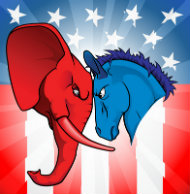
First presidential debate: Jim Lehrer, Executive Editor of the PBS NewsHour.
Vice presidential debate: Martha Raddatz, Senior Foreign Affairs Correspondent, ABC News.
Second presidential debate (town meeting format): Candy Crowley, Chief Political Correspondent, CNN and Anchor, CNN’s State of the Union.
Third presidential debate: Bob Schieffer, Chief Washington Correspondent, CBS News and Moderator, Face the Nation.
The announcement of the debate moderators generated some criticism in the media since no person of color was included. The New York Times reported that Univision, the Spanish language TV network, referenced the lack of bilingual moderators. Meantime, the Times said the National Association of Black Journalists bemoaned the lack of black moderators as “unacceptable.”
Responding to the criticism, a spokesman for the Commission told the Times, “We can’t make everybody happy.”
Apparently, third party candidates aren’t happy either, because they’re not allowed on the same stage as the two major candidates. The Nation acknowledged this fact, urging the Commission to open the process so that more voices and points of view not — just Democrat and Republican — could be heard.
Candidates Prepare
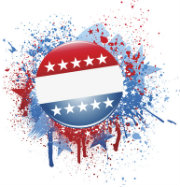
Today’s students might need to know that the candidates have been rehearsed and that much of what they will say during debates “under the lights” is not spontaneous or extemporaneous. The moderators will attempt to get both men to move beyond their “talking points” and well-worn campaign speech and advertising points.
The town hall format, chosen for the second debate, will allow for more variety. Participants asking questions will be undecided voters chosen by the Gallup polling organization. The topics for the town hall include foreign and domestic issues.
Questions via the Web and YouTube are not being used as they had been in previous debates. Instead, the Commission is urging voters to communicate their concerns directly to the debate moderators. Details of this new program were to be announced in early September on the Commission’s webpage.
Engaging Your Students in the Debates
Students who might be studying the issues and the candidates would be wise to read the various positions of both candidates prior to each debate. Those positions are on their respective web sites and have been discussed in the press for much of the past year and more. (The Pro/Con website is also a valuable resource.)
Consultants for each campaign have a plethora of research which tells them which issues (e.g. economy, jobs, deficit, etc.) resonate with voters and undecided voters. Students should be attuned to how each candidate speaks to “his” issues and various constituencies.
During the past year, charges and counter-charges have been leveled by both candidates in their own ads as well as ads sponsored and paid for the so-called Super PACS. During the debate students may wish to listen for how these issues are raised (if they are) and how each candidate deals with them in the live national telecasts.
Debate Watcher’s Worksheet
Four years ago, my media literacy partner Karen Zill and I wrote Lights, Camera…Debate and created a simple note-taking tool that students can use as they watch the presidential debates.
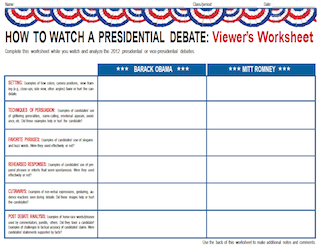
Following each debate, students may wish to survey various news outlets to see how each reports the debate. Are there one or two soundbites which seem to get the most press? Did one candidate say something “out of the ordinary” or say something blatantly false? With the advent of journalistic “fact-checking,” every word uttered by the candidates will come under scrutiny and be reported in the mainstream media as well as various blogs and twitter streams.
Students may wish to survey their classmates: did the performance of one candidate sway your opinion or make you more likely to support him? Is your own opinion/support swayed by classmates or by the media or both?
Last, ask students: if you were in charge of the debates, how would you alter the format or the moderators to change the way the candidates perform and the way the broadcast is seen and heard?
For more background information and ideas about helping students analyze political advertising, see Frank Baker’s MiddleWeb post on Media Literacy & Politics and our Resource Roundup on Learning about Elections.


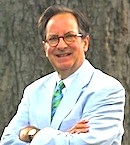








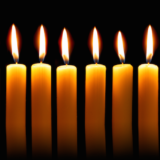

























although info for middle school, I find this info helpful for grades 9-12 which I teach
I am the middle school tech coach at the American School in Japan in Tokyo. Our 8th grade Social Studies classes just finished up a Propaganda Project focused on the U.S. Presidential race! They have posted their work on a blog and would love to have students take a look and make comments. They have done a FANTASTIC job with this project! Drop me a note if you are interested in this opportunity. Thanks – Jim Erwin (jerwin@asij.ac.jp)